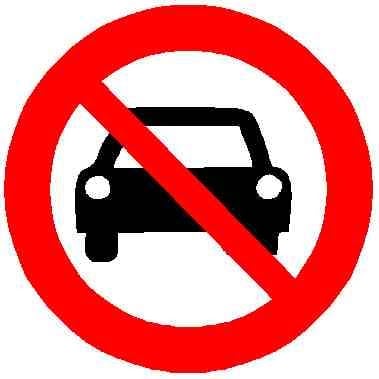removed by mod
Ya no what I’d do if that was you…I’d help because fuck that your life is worth more than my assumptions of you.
Fuck that everyone I’ve ever known who daily-drives a pickup wants half my friends lined up against a wall for one reason or another. Help them out by cleaning their wounds with your piss.
Testicular cancer is not a game
Almost none of you have the slightest clue what you’re blathering about.
It’s not like the beds are the same size. Length sure, but don’t you know that girth is what mattera for your dick replacements?
Not including the wheel well the Isuzu should be about 47 in. The F-150 is about 42. Including the wheel well it’s like 50 on the Isuzu and 52 on the F-150. The Isuzu will have more usable bed space and the wheel wells don’t go up very far so they’re pretty usable going like 2 inches up.
iirc, the sides of the also flip down, so you can haul even wider loads if you need too…
Sure, sure, but that ruins the joke.
But only one of them won’t have you seated in direct eyeline of all the super-high beams that everyone else is driving.
I love the little guy, but your legs are also the crumple zone.
You can always install your own super-high beams on the small one and then you don’t have to drive around in a car that shouts tiny pp.
just install a military grade laser
No no, OP, you see, how will I transport four fully grown corn-fed american patriots around?
A normal car?
No, I need to transport these four fully grown corn-fed american patriots while also transporting a bunch of material that I can’t have in the cab of my car.
A trailer?
Don’t be ridiculous, it’s too heavy, a normal car couldn’t tow that.
A slightly better car?
No, that’s insane, it’s much too heavy, and besides, I need to transport three metric tons of stuff, all outside of my vehicle, which means I need a trailer and I can’t keep any of it in the back of my normal car.
A beefy cargo van, with a covered cabin, and a divider?
No, see, you simply don’t understand, all my loads need to be uncovered. I’m transporting, uhh, loose gasoline? Not in a barrel, just loose in the bed, and 400 2x4s, and, uhh, gravel. I don’t want a semi, because you need to be licensed for that and I would rather pay more to have a personal vehicle which is capable of all of this at once rather than pay for a delivery. I also need good ground clearance, because I’m going into the unpaved american wilderness with these large uncovered loads. I’m not antisocial, I just need to transport this to my off grid homesteading compound in the middle of nowhere, with my four platonic corn-fed american patriot roommates, or my fifteen sons and daughters which I’ve already pledged to my friends’ other fifteen sons and daughters. How do I pay for all this? It’s all super cheap, I swear, I’m just an honest normal rural farmer, and I work a normal job as a military defense contractor, or running IT for some wing of some megacorporation, or maybe I just have inherited money. Everyone wants to be me, but I’m the only person who’s allowed to use this truck and say it’s totally acceptable because this is a totally legitimate use and I’m just exercising my normal freedoms.
This is all normal, and fine.
If I had to buy a pickup truck I’d buy a Suzuki Carry and call it a day
That’s a real man’s truck. Air conditioned, soft suspension, big boi so scary big truck don’t scare, brightest lights because corners scary, 4 seats cos wife is scary, big tyres because tools are scary, big tank because human interaction is scary.
NotJustBikes has a great spoof of this
The thought of someone getting a 4 seater truck purely because they are so terrified of their own wife that he only feels safe when she is in the back seat of a car
That’s what it’s like to drive a Ford F150
It’s all about pulling. The big one is rated to pull a boat, a big boat, and the little one isn’t. The big one implies you have other toys, like jet skis or a boat or an RV.
Little guy… your just hauling what you can fit in back.
You can tow with a car or a station wagon just fine. Actually that’s what families used for towing when the actual trucks were used in farms before the stupid CAFE standard in the US kicked in.
There are no station wagons anymore. I’d love one.
Wdym? There are Toyota(Corolla), Honda (Accord), BMW, Merc, Volvo, Audi, Subaru, MG and even Porsche station wagons in 2024. Where do you live? They are definitely available in the global and European markets.
Also you don’t need a station wagon for towing either. A car with a decent engine and breaks will achieve the same.
USA. SUVs, minivans, or small hatchbacks exist but the long, low, 8-seat station wagon no longer exists.
I don’t know what you’re calling a station wagon, but it’s a rename of something that ain’t a station wagon.
Sure, the big trucks can tow. But that falls apart when you look at any various study about truck owners. Only a small fraction use the bed, towing, etc.
You don’t need a big vehicle to tow. You just need a good engine.
In Europe, we’re towing just fine. Our biggest cars are half the size of this monster. It wouldn’t even fit on our streets, literally.
Thanks for the Land Rover Range Rovers, Audi Q5s, and BMW X3s.
But the one on the left wouldn’t pass US fuel economy standards, which are based on vehicle footprint since 2012.
That’s the reason the Ranger etc were discontinued for a while, and when they returned were bigger than the old F-150s.
It’s so the reason the small cargo vans (Nissan NV200, Ford Transit Connect, and Ram Promaster City) were all discontinued in the last 2 years. CAFE standards increase over time, and it’s easier to just make bigger cars.
Its also in my opinion, a complete failure of the EPA and a disconnect from what it’s true goals should be. The marketing trends show that bigger vehicles (which have more leneient standards and can guzzle more fuel) have been sold more and more since these standards, all to the benefit of oil companies selling gas to fill the bigger tanks and the benefit of auto makers enjoying higher price margins on bigger vehicles. Once again the hand of capitalism and the “free market” prioritizing profits over everything.
Its also in my opinion, a complete failure of the EPA and a disconnect from what it’s true goals should be. … Once again the hand of capitalism and the “free market” prioritizing profits over everything.
I see a contradiction here.
Somebody designed a regulation without using their brain (or using to wrong ends), but apparently capitalism is to blame.
Would you prefer we blame you, comrade?
I’ve tried to immerse myself into commie stuff at some point, didn’t work.
Everyone blames EPA while forgetting two things.
The manufacturers chose to do this; no regulations prevent them from making a vehicle like the one on the left that meets the new standards. They’re just evading the standards.
Politicians of all walks allow regulatory capture, so almost all regulations are influenced by the people that should be regulated, making them useless or easy to evade.
It was a misguided reaction to the last round of CAFE fuckery.
The manufacturers started putting hatchback options as the standard kit on a bunch of models so they could classify them as lite trucks. So instead of basing standards on vehicle classification, the EPA changed it to vehicle footprint.
What that resulted was the subcompact trucks and cargo vans being held to the same efficiency standards as small cars, which really isn’t fair.
Yeah, Ford now sells a small truck with a hybrid engine and a 4-ft bed, but it has a towing capacity of 2,000 pounds as opposed to the old Ranger’s 6,000.
Yeah, it does 40 instead of 27 mpg, but the smallest truck that can actually haul plywood or tow a trailer big enough to be useful now has 23mpg. It’s a net loss in fuel economy because small vehicles are required to be designed around hauling passengers, not cargo.
But the one on the left wouldn’t pass US fuel economy standards, which are based on vehicle footprint since 2012.
Bigger cars consume more fuel.
Yes, but the regulation is a “amount of fuel per weight of vehicle”. In absolute terms it’s more.
It’s like when you’re buying produce. $10 for 10 strawberries ($1.00 per berry) and $15 for 20 strawberries ($0.75 per berry). The $15 option is “only” $0.75 per berry, but it’s also just more money in total.
It’s moronic to define fuel economy per pound of vehicle.
Agreed.
Unintended consequences, the plague on governments through history.
When a consequence is so blatantly predictable can it be unintended?
Can it truly be considered intended when Congress just signs the bills ALEC pays them to sign? I guess ALEC intends it.
If the purpose is to sell more expensive trucks and SUVs then the bill has been wildly successful.
But you can still legally buy older Kei trucks in the U.S.
And they’re affordable.
https://boekiusa.com/inventory/new-jersey/paterson/all-vehicles/available
Not too many dealers specialize though.
But one of these is actually using their truck bed.
removed by mod
Wow been a while since I seen a troll this obvious.
Troll?
You have people commenting lol that you can fit 3-4 people into that tiny 3rd world truck. Literally rationalizing the ownership of a midget vs a full sized American pick up truck.
But I’m the troll. Ok. HAHA.
You know work trucks in the US used to be much smaller until companies started making them bigger so they could skirt emission and safety regulations right?
Japan is a 3rd world country now?
I think the “tiny” vehicle is mostly meant for worksites and small roads whereas the modern pickup truck is meant to subvert the EPA’s definition of road class vehicle so that the company can produce less Eco-friendly vehicles to generate larger profit margins. Everything else is just the marketing working on middle America and the massive cope that comes with justifying that investment.
Didn’t a German company - Stellantis buy the big three in order to force the car makers to go EV?
Stellantis
Stellantis is an Italian company, owner of FIAT, Chrysler and Peugeot, and they have no intention of doing EVs, they’d rather continue with the ICE cars they’re already building profitably. Accountants do not like change to production lines.
And how they would force all American car makers to go EV, anyway? That doesn’t make sense.
Stellantis My fault, not German but Italian.
I have my facts upside down. Apparently there’s plans to eliminate majority of ICE and replacing it with EV. My brother in-law works at Chrysler in downtown Detroit, he had explained the future plans of Chrysler. In SE Michigan you’ll see the Chrysler Airflow driving around, they’re wrapped in some black/white odd patterned vinyl.
I’ll concede, I don’t have any other information regarding the change.
The Ram REV is due out before the end of the year. Stellantis has also committed to an electric sports car to replace the Challenger/Charger line. They has axed the hemi line in favor of a more economical i-6. Ford and GM are doing fairly well in the ev market. The main hold-up here in the states is infrastructure and price. I have hopes that both situations will be addresses in the next 4 years or so. While I don’t expect the situation to be perfect in that time, progress is progress.
Same passenger and tow capacity too
Not trying to defend the big truck, but you can fit 5 people in the little one?
My guess is 3-4?
That little one is a two-person truck IF they left the second seat in.
Well we are talking about maximum right? Cram em in there! Although that does make the big truck a 10 seater.
Wat.
A lot of people who buy trucks these days just need something that can tow a travel trailer or a boat to their favorite camp site a few times a year. It’s not that they need a truck on a day to day basis, but they might need the towing capability on occasion. That’s why these trucks are a weird combination of luxury sedan (with their leather seats and high end interiors) and pickup truck. Most of the time they use it like a regular car, but sometimes they might need the towing capability.
Literally planning to buy a truck for when I need it and I’d still make it a daily driver if needed.
Pff my fckn subi can do that and fit in a standard car park
Your Subi wouldn’t be able to pull some of these American travel trailers. Many of them are absolutely massive, they’re like a luxury condo on wheels.
We have no sense of reasonable proportion here in the US. Everything must be unnecessarily large and unwieldy, gaudy and exorbitant. Bigger is always better here in the good 'ol US of A.
some of these American travel trailers
Can’t forget the boat! For reference, while this isn’t typical, it’s not uncommon. That’s a pretty small travel trailer and boat. I’ve seen this setup with much bigger trailers and boats several times.
Not uncommon at all. My cousin had a giant fifth wheel, and he would often pull his four wheelers behind it.
Excess pleases Slaanesh
If it’s a “few times a year” situation that really seems better suited to renting.
Part of the issue there is that for a large number of people the ‘few times a year’ are major holidays when everybody else wants to tow their house-sized RV and boat to the lake for a day or two. The rental fleet just isn’t big enough to service the surge demand.
Or maybe they’ve got the money
Rental companies, at least in America, have policies against using their vehicles to tow things.
In addition the truck in front has to be imported to the US and there’s weird regulations about purchasing them so you can only buy used. As far as I know you can’t import a new model. If a car is newer than 25 years old it can not be imported unless it meets the requirements of US Office of Vehicle Safety Compliance.
https://www.nhtsa.gov/importing-vehicle/importation-and-certification-faqs
These all sound like regulatory, issues. Nothing that can’t be fixed with a minimal amount of political goodwill.
I think it is regulatory. However getting US politicians to do what’s right is never trivial. It would take the legislative branch to change the regulations, while likely ignoring lobbyists within the automotive industry. It’s fixable but it won’t be fixed.
Michigan is an important swing state, and the UAW is a major political player nationally. Ironically, that doesn’t stop the US automakers from routinely screwing over auto workers and labor in general.
fuck both of them anyway
I mean I’m all for hating cars, but why the small one? That one seems reasonable at least.
Like it or not, some kind of truck or work vehicle will have to exist for landscapers and such. Id much rather see the smaller truck everywhere than the larger. The streets would be safer for anyone not in a metal box.
Yes exactly.
it’s not like having 4 wheels and a cab is somehow magically evil, the problem with cars is that they’re too big and go too fast, and that people expect them to always get priority.
Here in sweden a lot of landlord companies have started using what is effectively more robust golf carts as work vehicles, and they don’t even really feel that out of place on a combined pedestrian/bicycle path.
Even just removing the massive bulge at the front of a standard car helps a lot, that suddenly brings the driver closer to everything and means their natural instincts to be careful engage more.








